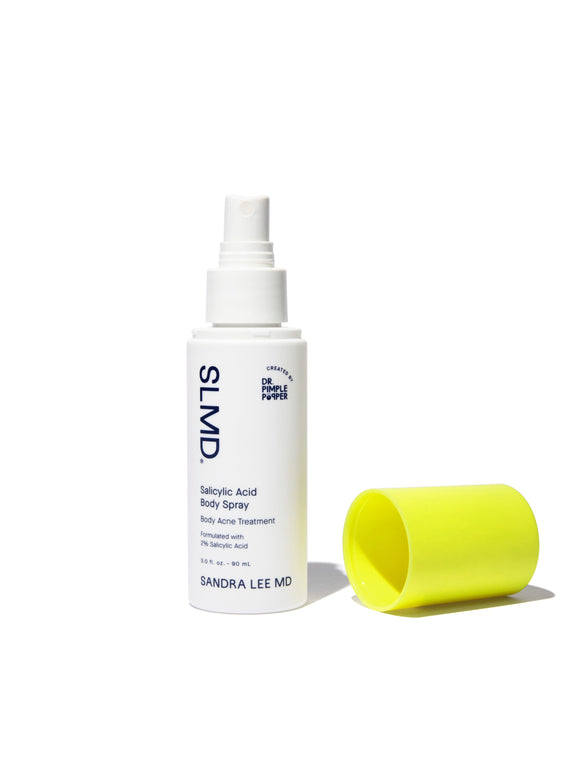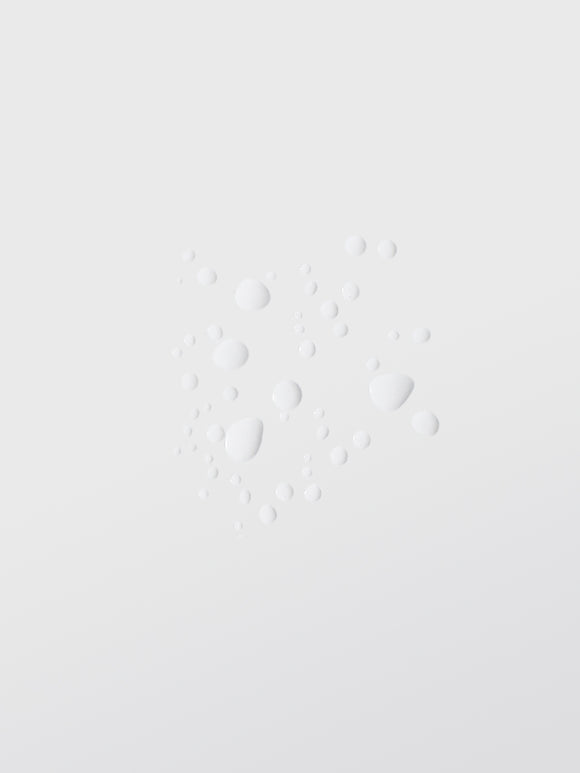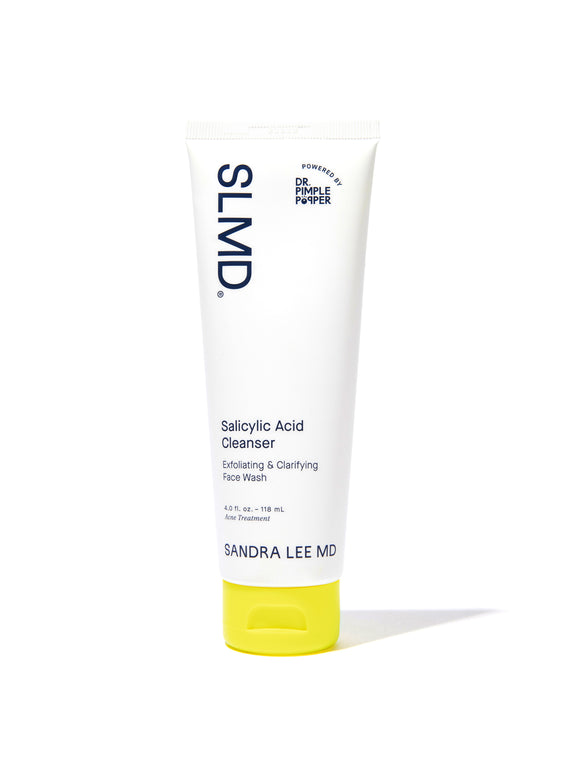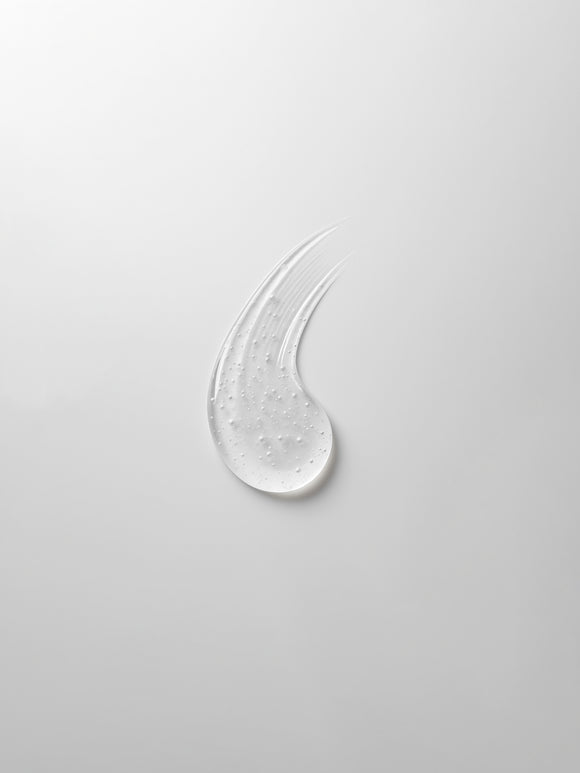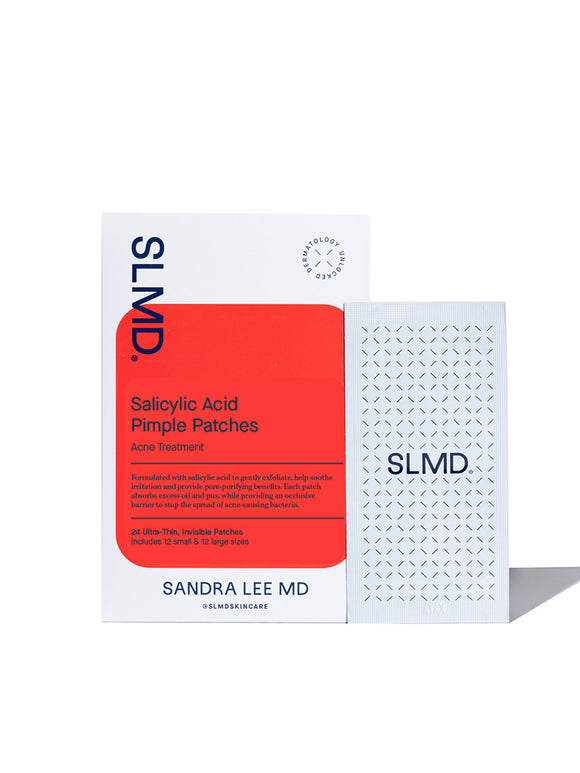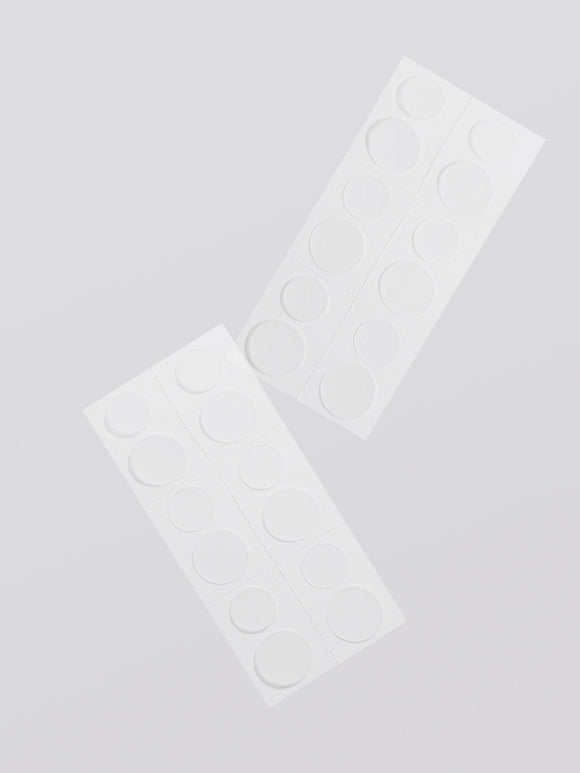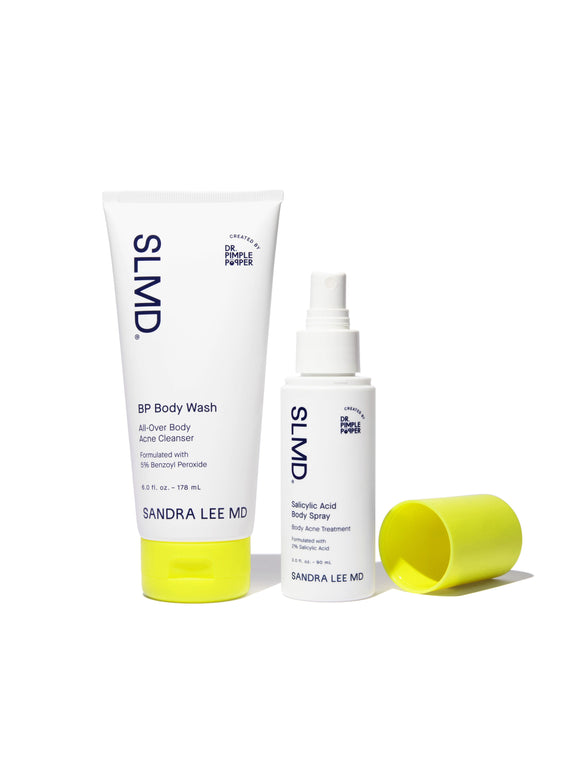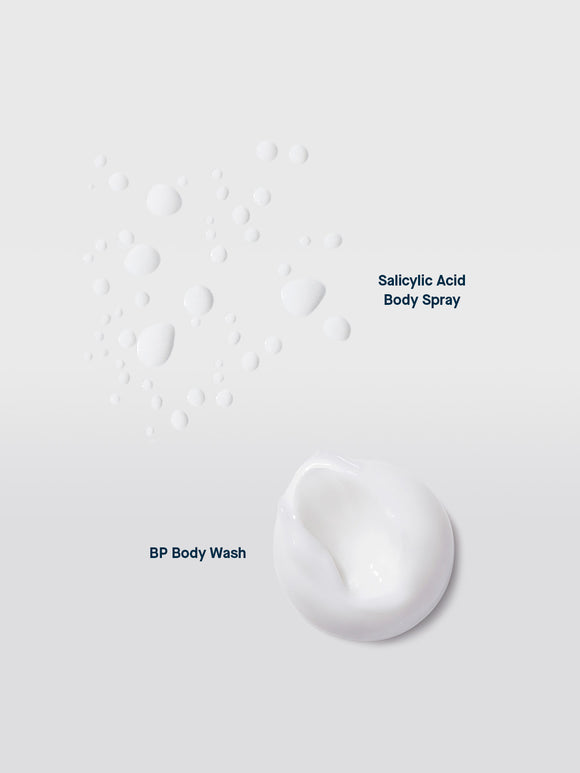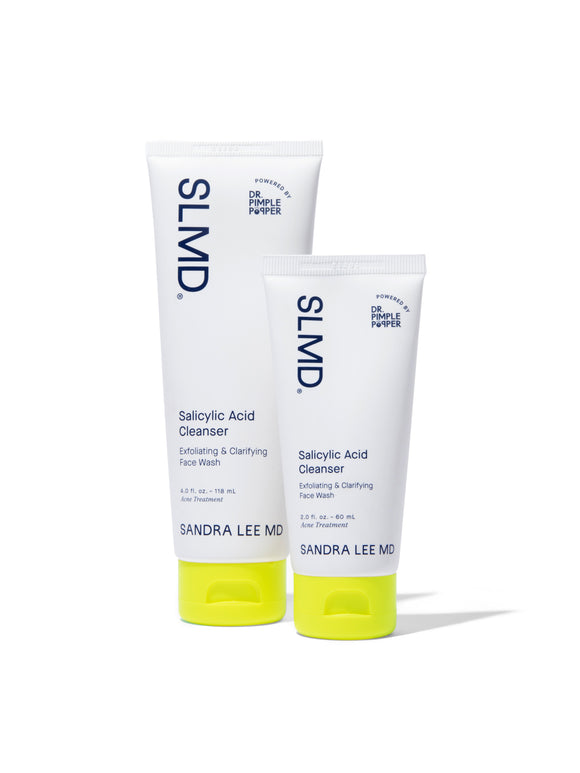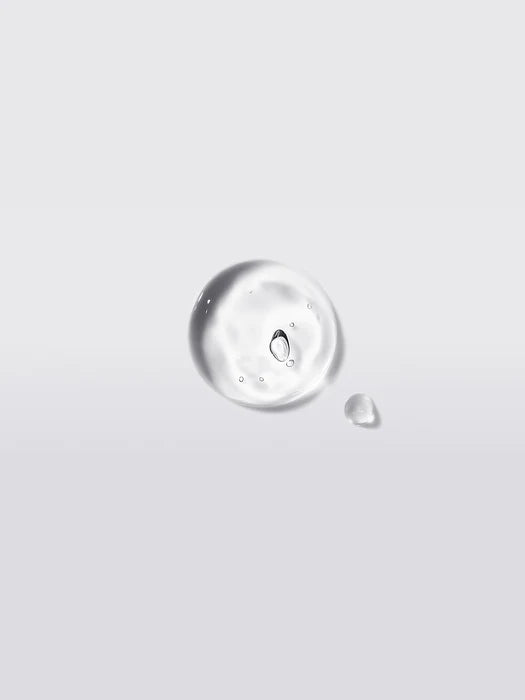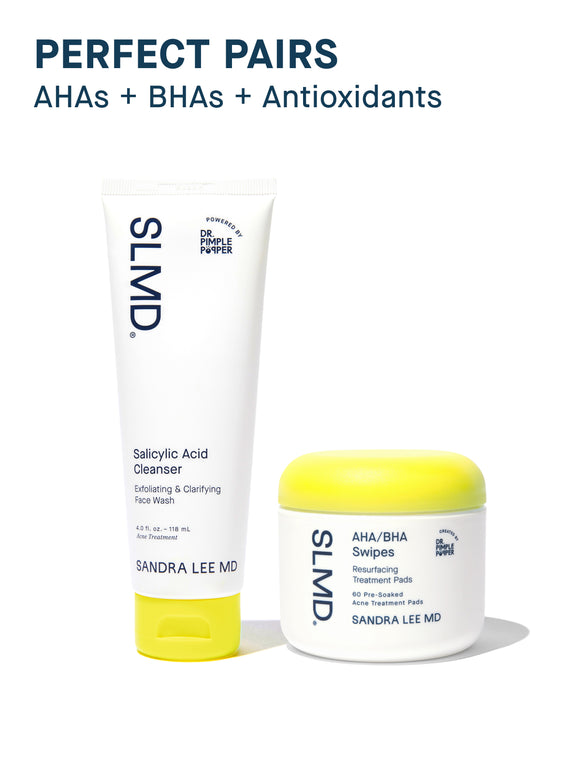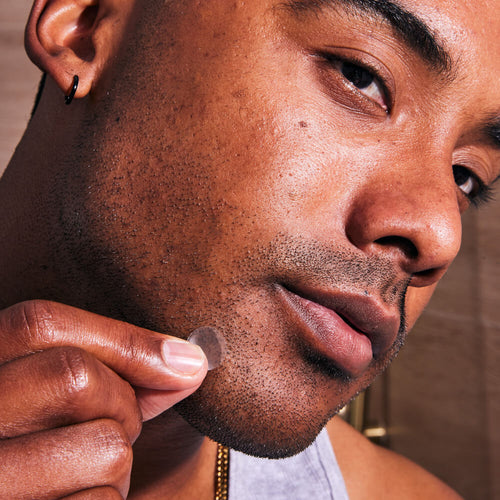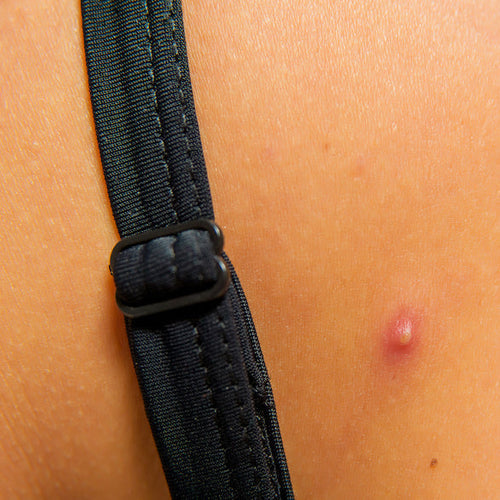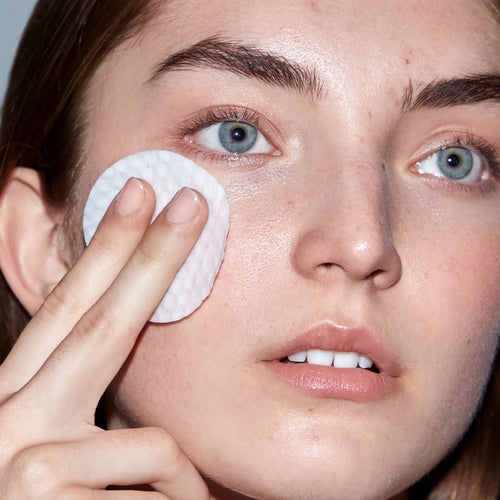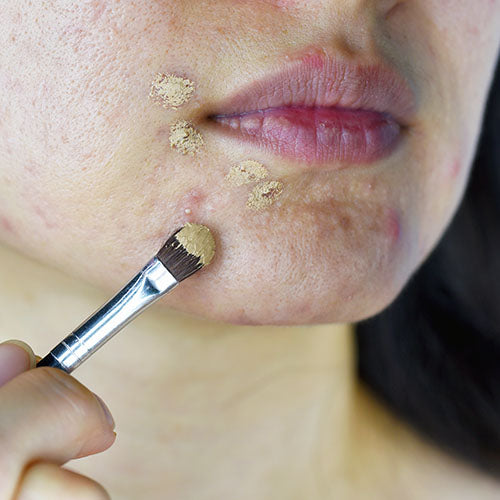
Is Salicylic Acid Enough to Treat Your Acne? A Derm Explains
Dr. Pimple Popper clears up confusion about this popular — and powerful — acne-fighting ingredient.
Published:
4 minute read
Salicylic acid is a go-to ingredient for treating mild to moderate acne — and for good reason. It’s effective, accessible, and available in dozens of over-the-counter (OTC) formulas. But is salicylic acid powerful enough to clear acne on its own — or are there times when you need something stronger?
Here, dermatologist Sandra Lee, MD (aka Dr. Pimple Popper) breaks down how salicylic acid works, when it’s enough, and when it might be time to talk to your dermatologist.
Article Quick Links
What does salicylic acid do for acne?
Salicylic acid is a beta hydroxy acid (BHA) that’s oil-soluble — meaning it can penetrate into pores to help exfoliate from the inside out. It breaks apart the bonds between dead skin cells and dissolves excess oil, helping to prevent the clogged pores that lead to blackheads, whiteheads, and breakouts.
“Salicylic acid is one of my favorite acne-fighting ingredients,” says Dr. Lee. “It’s gentle, it’s anti-inflammatory, and it’s very effective at keeping pores clear.”
What strength of salicylic acid is available over the counter?
The FDA regulates salicylic acid as an OTC drug ingredient, which means its concentration varies by the condition it’s treating. For acne, salicylic acid is approved in concentrations between 0.5% and 2%.
You’ll typically find it in:
- Cleansers (try SLMD Salicylic Acid Cleanser)
- Serums
- Spot treatments (try SLMD SA Acne Spot Treatment, Salicylic Acid Pimple Patches)
- Toners or pre-soaked pads (try SLMD AHA/BHA Swipes)
- Body sprays or washes (try SLMD Salicylic Acid Body Spray)
Dr. Pimple Popper tip: Start with a lower concentration if you’re new to salicylic acid or have sensitive skin. Increase frequency or strength gradually as tolerated.
Is salicylic acid enough to clear acne?
Sometimes, yes — especially if you’re dealing with non-inflammatory acne that shows up as:
- Blackheads and whiteheads
- Occasional breakouts
- Oily or congested skin
But salicylic acid isn’t a one-size-fits-all solution. If your acne includes inflamed pimples like papules or pustules — or deeper lesions like cysts — you’ll likely need additional treatments to see real results.
“Think of salicylic acid as a great first line of defense,” Dr. Lee explains. “But if your breakouts aren’t improving after consistent use, it’s time to look at other options — or combinations — that target bacteria and inflammation more directly.”
Dr. Pimple Popper's Salicylic Acid Picks
When salicylic acid alone isn’t enough for acne
If you’ve been using salicylic acid for 6–8 weeks without improvement, consider talking to your dermatologist. You may benefit from adding or switching to other ingredients like:
- Benzoyl peroxide: Kills acne-causing bacteria and helps reduce inflammation
- Retinoids: Help prevent clogged pores and regulate skin cell turnover
- Antibiotics (topical or oral): Often prescribed for moderate to severe inflammatory acne
- Hormonal treatments: For acne triggered or worsened by hormonal fluctuations
Dr. Pimple Popper tip: "To treat mild to moderate acne at home, start with a kit that includes a combination of dermatologist-recommended ingredients, like my SLMD Acne System."
In-office treatments like chemical peels, laser therapy, or cortisone injections may also be recommended for certain cases.
Can you get prescription-strength salicylic acid?
Yes — but it’s typically not prescribed for acne. Prescription-strength salicylic acid is most often used to treat:
- Warts
- Corns and calluses
- Psoriasis and seborrheic dermatitis
In dermatology offices, higher concentrations (10–50%) may also be used for chemical peels to address:
- Comedonal acne
- Sun damage
- Actinic keratoses (precancerous lesions)
These treatments should only be performed by a medical professional — stronger is not always better, especially when it comes to exfoliants.
Can you buy high-strength salicylic acid without a prescription?
Technically, yes — but dermatologists strongly advise against it. Online sellers may offer 10%–50% salicylic acid solutions without clear instructions or warnings. These high-potency formulas can cause serious side effects, including:
- Burning and redness
- Skin peeling and blistering
- Permanent scarring
- Severe allergic reactions
If you’re not getting results from OTC salicylic acid, the safer route is to talk to your derm about next steps.
Dr. Pimple Popper answers salicylic acid and acne FAQs
Q: Is salicylic acid enough to treat all types of acne?
A: It’s great for mild to moderate acne like blackheads and whiteheads. But if you have severe or cystic acne, it may not be enough on its own.
Q: How long does it take for salicylic acid to work?
A: You should see improvement in 4–8 weeks with consistent use. If not, it may be time to explore other treatments.
Q: Can I use salicylic acid every day?
A: Most people can tolerate daily use — but if you’re new to it or have sensitive skin, start slow and build up.
Q: What should I avoid when using salicylic acid?
A: Avoid using it with too many other active ingredients at once, like strong retinoids or physical scrubs, to reduce the risk of irritation.

Dr. Lee's Last Word
Salicylic acid is one of my go-to ingredients for blackheads and whiteheads. But if your breakouts aren’t improving, it’s a sign to explore other options — either in combination or with your dermatologist’s help.



